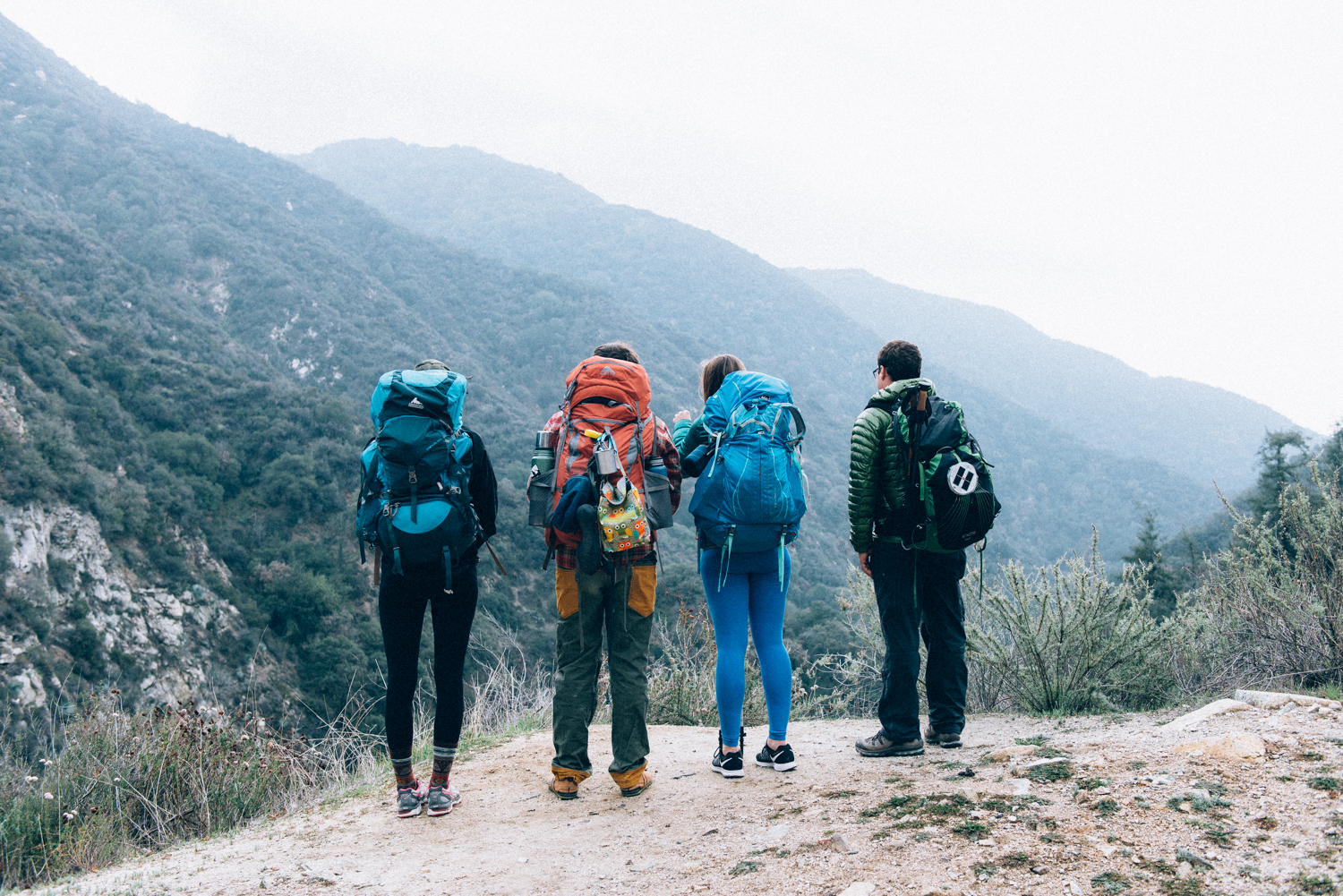Hiking is not just a form of exercise—it’s a way to get to know yourself and to discover nature in its original form. Hiking is (usually) free and accessible to a wide range of physical abilities, which makes it a great outdoor activity for all. If you’re new to hiking, starting out can feel a bit intimidating, so we’ve created this guide to make sure your introduction to hiking is enjoyable and super safe. Got the basics down, and looking to set off on your first journey? Check out a hike-in Hipcamp near you!
Photo by Hipcamp Photographer Andrea Spidell in North Carolina
1. Plan ahead, and check the weather
For beginner hikers, choosing a good-weather day is the No. 1 way to ensure a good experience. You may not want weather to get in the way of your hike, but poor conditions can often cause accidents or make a hike just plain miserable. Even if you plan to do the hike rain or shine, check the weather ahead of time so you can prepare yourself with the gear you’ll need to stay dry and safe. Here are some tips for hiking in the rain.
![]()
 Photo by Hipcamp Designer Julian Bialowas at Mount Tamalpais State Park, California
Photo by Hipcamp Designer Julian Bialowas at Mount Tamalpais State Park, California
2. Stay prepared by bringing the essentials
Your packing list depends on how many days you plan to spend on your trip, where you plan to sleep, and what time of year is it. For simple day hikes, here are some essentials you should keep in your backpack:
- Map (the paper kind!)
- Compass
- Water
- Food
- Fire-starter or matches
- Simple first-aid kit
- Army knife or multi-purpose tool
- Flashlight and batteries
- Sunscreen and sunglasses
3. Make sure you have the proper amount of food and water
Water supports life, so it’s the single most important thing to bring on a hike! You need an entire liter of water for every 2 hours of hiking, and it’s important that you don’t under-pack, as you could add unanticipated time if you get lost or have to detour. We recommend getting a reusable water bottle and decorating it with stickers from all your adventures. You’ll save money, cut plastic use, and be proud to show it off on the trail!
For a day hike, its best to bring high-energy food that doesn’t need refrigeration or heating. Common choices include jerky, dried fruit (we love mangoes!), trail mix, or energy bars. No need to over-do it on the food—just make sure you’ve got enough to fuel you on your journey. Then throw in another granola bar for good measure.

4. Choose the right shoe/sock combo
Blisters will ruin an otherwise perfect hike, and they’re likely to occur if your shoes and socks aren’t right for the trip! We recommend visiting your local outdoor shop and getting fitted for boots that are right for you. Ideally, they should be snug but not too tight, and match your unique fit and use case. Similarly, your socks can make or break the hike, so it’s important to think about the proper length in conjunction with your boot. Typically, a merino wool, crew-length sock is the standard general-purpose hiking sock, and a good pair is definitely worth the investment!
Photo by Hipcamp Photographer Rob Wilson at Longleat House Spirit Return in British Columbia
5. Pack your phone, and make sure it’s charged
You should always start your trip with a fully charged battery in case of an emergency. You’d be surprised how much service you can find way up on the top of a mountain if you need it. Not to mention, it’s nice to have a camera on hand! Make sure to follow Hipcamp on Instagram, and share your adventures with @hipcamp and #FindYourselfOutside. 🙂

6. Always carry a source of light
You should always plan to arrive at your destination with plenty of time before dark. If your hike takes longer than expected, getting caught in the dark without a light could put you in a bad situation, so carrying one at all times is a must! We recommend a headlamp for a hands-off approach, so you can focus on balance and getting to your final destination. Make sure to bring something other than just your phone flashlight, which could drain your battery and turn off unexpectedly.
Photo by Hipcamp Photographer Michelle Park in Arkansas
7. Read up on basic first aid
It’s important that every hiker has some basic knowledge of first aid to help keep your group healthy and comfortable in the event of any type of injury, minor or serious. Here is a basic first-aid kit to have on hand during any hiking trip.
![]()
 Photo by Hipcamp Photographer Alyx Schwarz at Historic Sturtevant Camp, California
Photo by Hipcamp Photographer Alyx Schwarz at Historic Sturtevant Camp, California
8. Bring a friend (or friends!) along
Once you get some experience under your belt, you can begin to explore solo hiking. But when you’re just getting started, it’s best to bring a friend or two who can help you navigate the trail, assist in case of any injuries, and of course, make the hike more fun! You can also earn $10 Hipcash for each friend you invite to join Hipcamp.
![]()
 Photo by Hipcamp Photographer Maegen Leake at Holy Cross Refugio Backcountry Huts, Colorado
Photo by Hipcamp Photographer Maegen Leake at Holy Cross Refugio Backcountry Huts, Colorado
9. Remember to pace yourself
It’s the journey, not the destination, right? Racing through the hike to get to the waterfall, vista, or summit could take away from your hiking experience. But moving at a pace you’re comfortable with, soaking in the scenery, and stopping for breaks when you need them will ensure you actually enjoy the hike. Plus, once you get to where you’re headed, you’ll still have enough energy to celebrate!
Photo by Hipcamp Photographer Bahareh Ritter in New Mexico
10. Find a hike-in camp for ultimate satisfaction
Every good hike leads somewhere awesome, and there’s nothing more satisfying than hiking all the way to your camp for the night. Hipcamp offers all kinds of hike-in spots to rest your head after a long day of #FindingYourselfOutside.
Article Credit: Article Credit







